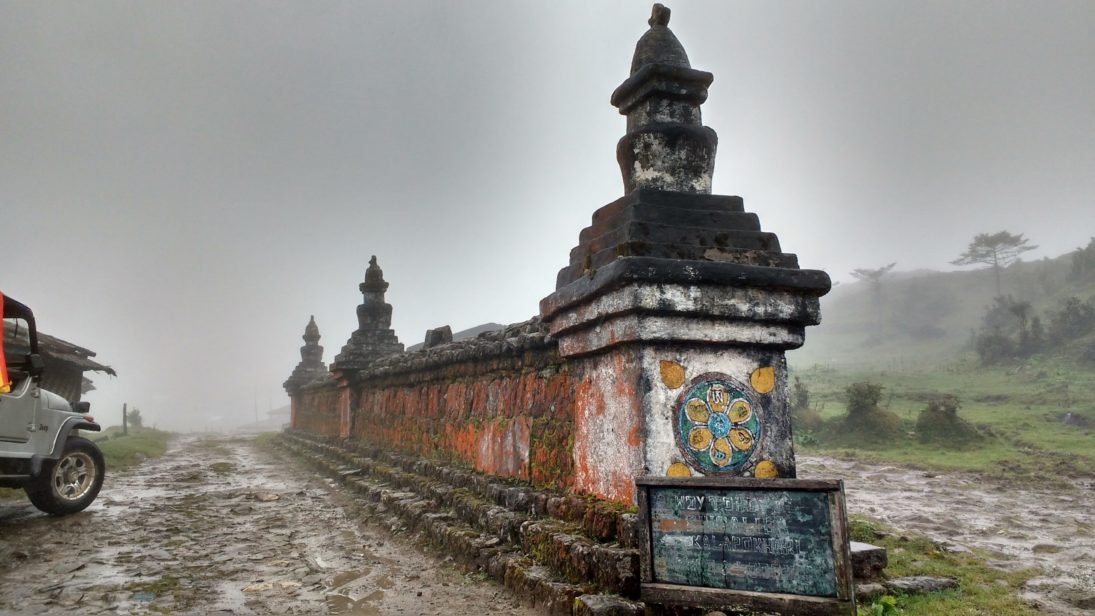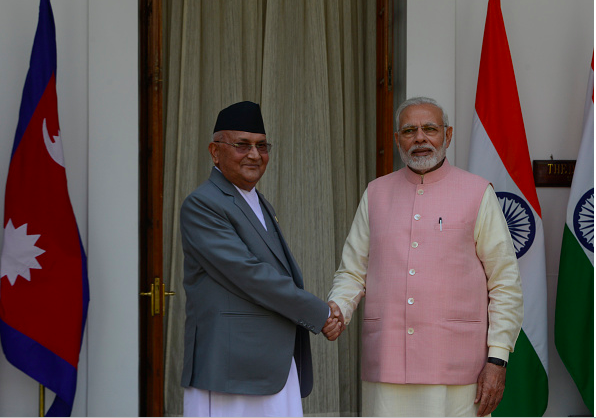
The Indian Army chief General Narvane’s recent allegations that Nepal took action on the Kalapani issue on someone else’s behest—evidently referring to China—drew sharp criticisms in Nepal. Nepal had been in the process of amending its constitution to include in its map the disputed territories of Kalapani, Lipulekh, and Limpiyadhura. Nepal justified its decision as a response to India unilaterally updating its map to include the disputed territory of Kalapani, published in the aftermath of bifurcation of Jammu and Kashmir on August 5, 2019. The recent move comes after the inauguration of a new road link to Lipulekh via the disputed territory. India has rejected Nepal’s actions and claims to the territory as “artificial enlargement”, not based on historical facts. The land under dispute is also strategically significant as it forms a tri-junction between India, China, and Nepal. While the Indian government offered no official remarks on the Army chief’s statement, the government and diplomatic circles have kept a cautious eye on these developments.
In recent years, China’s political interference in Nepal has increased substantially. Nepal has, for a long time, maintained a policy of neutrality and balancing to reap the benefits of its position as a buffer state between India and China and to avoid undue interventions. It has also kept Nepal away from being mired in conflicts such as the 1962 Sino-Indian war. In practice, Nepal has had difficulty resisting Indian influence, due in large part to an overdependence economically on India. Nepal’s recent actions, including raising the border issue, signing security agreements, and opening avenues for trade—perceived as broadly in alignment with China—are the result of decades of frustration with Indian interference and a desire for greater autonomy. This alignment, however, belies its official position of neutrality and may end up perpetuating foreign influence in Nepal.
Contextualizing China’s Expanded Political Influence in Nepal
Nepal’s current actions, including raising the border issue, signing security agreements, and opening avenues for trade—perceived as broadly in alignment with China—are the result of decades of frustration with Indian interference and a desire for greater autonomy. This alignment belies its official position of neutrality and may end up perpetuating foreign influence in Nepal.
In the past few months, on more than one occasion, China has directly interfered in the politics of Nepal, expanding beyond the bounds of economic cooperation. There are reports indicating the Chinese envoy interfered in the internal politics of the Nepal Communist Party (NCP) to save the government of PM Oli on two separate occasions. The NCP also drew criticism for holding meetings with CCP leadership amidst party factionalism during the border controversy. Recently, there were reports of Chinese incursions at ten places along the Northern border. At the same time, Nepal’s reluctance to ratify the Millenium Challenge Corporation pact with the United States points towards increasing Chinese influence.
China has emerged as a significant political player in a country that had almost entirely fallen within the ambit of India’s sphere of influence. In the past, even as India-Nepal relations witnessed highs and lows, India has long maintained a special relationship with Nepal. Most recently, however, India’s big-brotherly, patronizing attitude, and unsolicited interference in Nepal’s internal politics since independence has pushed Nepal towards China. The memories of an unofficial economic blockade in 2015 have yet to fade as India attempted to interfere in the constitution-making process of Nepal. At the same time, Nepal has found an increasingly assertive China extending its hand towards Nepal, part of its quest to gain power in South Asia.
Over the past few years, China has capitalized on Nepal’s frustrations with India and challenged the Indian position therein, signing agreements such as a transit protocol, which ends Nepal’s reliance on India for third-country trade. China has also marked a substantial economic presence in Nepal through projects such as Belt and Road Initiative. Now, it is seeking political influence. This increasing influence will very likely become a thorn in Nepal’s side since it lacks the political stability and economic strength to dictate the terms of the relationship.

Nepal punching above its weight: Cartographic war and Nepal’s foreign policy conundrum
There is a tendency to see the current events as a result of Prime Minister Oli’s domestic political agenda rather than indicating any change in Nepal’s policy of balancing. Oli won the election on jointly nationalist and anti-Indian rhetoric, and it is politically expedient for him to evoke anti-Indianism in a time of crisis for his government over the handling of COVID-19 to pacify the internal fist-fighting in his party. However, such arguments tend to ignore the larger trajectory of the past decade, with several low points in the India-Nepal relationship and Nepal warming up to China at the cost of its relationship with India. It is important to present any argument about the role of domestic politics as continuous with these trends, as the cartographic war is not a one-off event.
Oli’s domestic motivations have accelerated a trend built on years of accumulated frustration over Indian meddling and mark a clear tilt towards China. This is nonetheless unlikely to bring about greater autonomy for Nepal. In such a situation, any realignment step Nepal takes carries significant weight in terms of the signal it sends to the world. Nepal needs to exercise caution and restraint in aligning with China, especially at a time when the world is witnessing intense competition between China and the United States, which holds ramifications for all the regions, including South Asia.
Any realignment step Nepal takes carries significant weight in terms of the signal it sends to the world. Nepal needs to exercise caution and restraint in aligning with China, especially at a time when the world is witnessing intense competition between China and the United States, which holds ramifications for all the regions, including South Asia.
The recent clashes between India and China reveal the dangers of perceived alignment with China for Nepal. Although Nepal raised the territory issue before the clash, it found itself in a tight spot when Indian and Chinese forces engaged in a deadly clash in Galwan shortly thereafter, as it drew attention to arguments that Nepal endorsed China’s efforts to surround India. Nepal’s position was further compounded by a Chinese state-sponsored media report claiming that in case of war with China, India has to face the enemy on three frontiers as Nepal and Pakistan will support China.
Nepal requires a better act of balancing
Nepal has found itself in a tough geopolitical spot sandwiched between two giant neighbors currently engaged in a border standoff. A weak economy and decades of political instability have further reduced its capacity for maneuvering an effective strategy of balancing. Aligning with or signaling alignment with either India or China will nullify all its earlier attempts at neutrality, and Nepal needs to keep interference by both India and China at bay.
As part of this, it is important for Nepal to send the right signals to New Delhi. As a first step, Nepal’s Prime Minister Oli can refrain from engaging with anti-India rhetoric in public speeches, such as when he referred to the coronavirus as the “Indian virus” during his address to the nation and insulted the Indian national motto in his speech in the lower house of parliament. One option would be for Kathmandu and New Delhi to operate within available back-channels to stop further deterioration in India-Nepal ties. At the same time, however, an over-reliance on either India and China for economic aid will invariably come with undue political interference in Nepal. In such a case, Nepal may want to focus on political stability and building its economy, and be cautious of becoming party to external conflicts.
Lastly, partisan domestic political interests should not prevail over Nepal’s national interest. In this case, the opposition can hold the government accountable in terms of deterioration in relations with India and increased Chinese interference as it did after Oli’s recent statement alleging India to trying to topple his government. The ball is in Nepal’s court to help make an environment that is conducive to dialogue, which may benefit a strategy of balancing in the long-term.
***
Image 1: Wikimedia Commons


